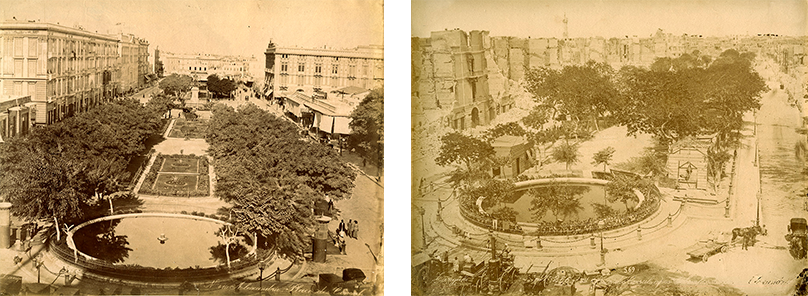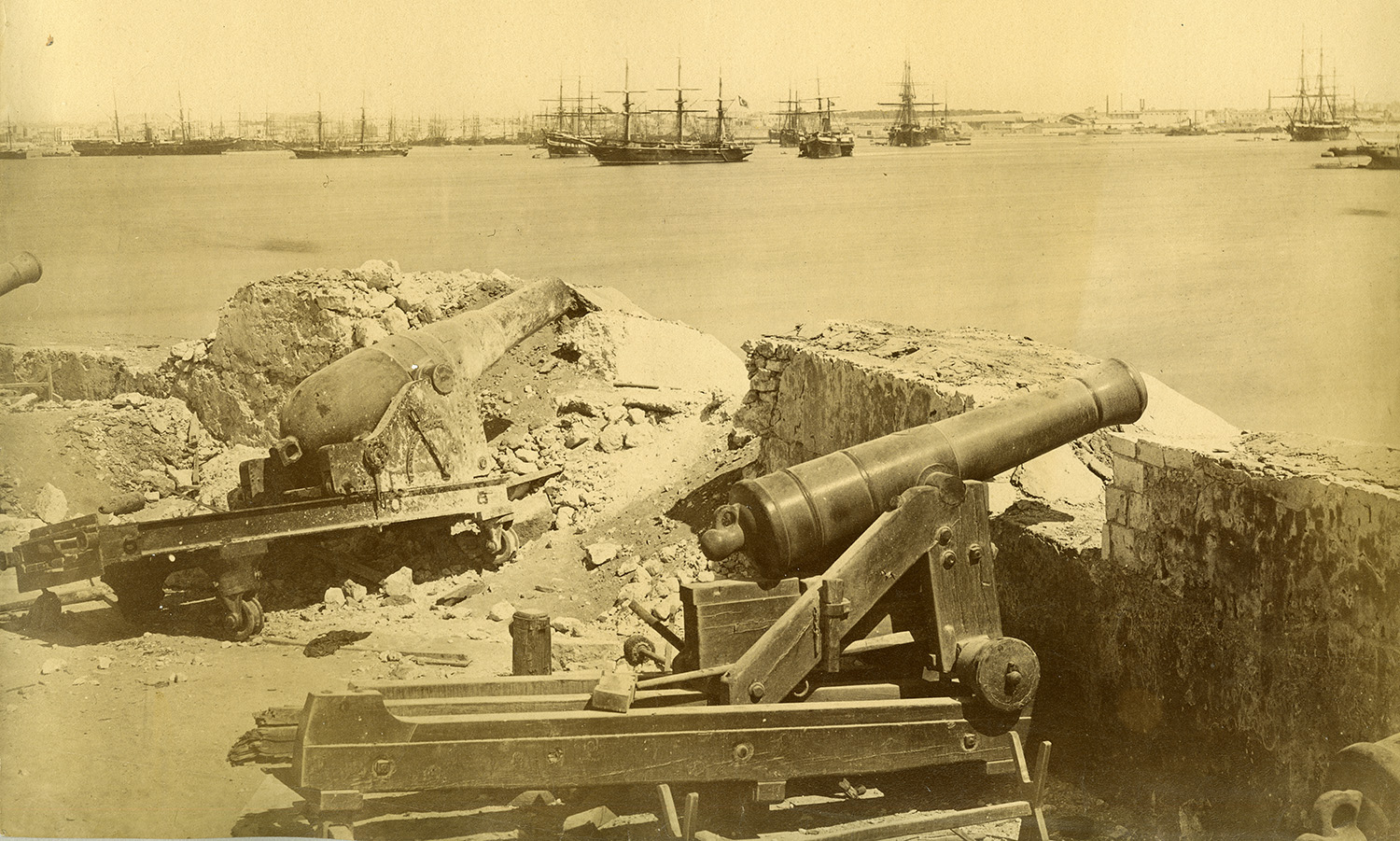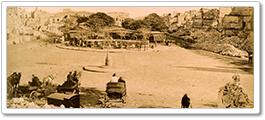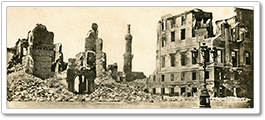By Norbert Schiller
Introduction:
On 20 May 1882 two Englishmen, Kusel Bey, Controller General of the Egyptian Customs and his friend Morice Bey, Inspector General of the Coastguard Service, stood on the roof of the coastguard office in Alexandria, Egypt, and watched the arrival of the British and French fleets (the French warships would leave before the bombardment began). As much as both men were proud to see their navy, they were equally aware that this was not a good sign. “Ah, Kusel, they are magnificent, they are British, you and I feel infernally proud of them, but this I am afraid will be a bad day for us,” warned Morice Bey. Nearly two months later, on the morning of 11 July, the British fleet, consisting of 15 warships, launched its attack and over the course of the day systematically silenced the 297 canons that Ahmed Urabi and his Egyptian army had set up to defend Alexandria.

The Grand Square before and after the British Bombardment of Alexandria on 11 July 1882 Phot. Zangaki

Mohammed Ali Phot. unknown
Samuel Selig Kusel, (later given the title of Bey in Egypt and Baron by King Victor Emmanuel III of Italy) arrived in Egypt in 1863. The 15-year-old had just finished his studies in England and set out to work with a family friend who owned a cotton ginning factory. Over the course of his 24 years in Egypt, Kusel Bey climbed his way up the social ladder holding several high-profile positions in the government. Besides his native English, he mastered Arabic and Italian which helped him move easily in different circles. During the British bombardment, Kusel Bey remained in Alexandria to assist in securing British interests.
In 1915, over a quarter of a century after leaving Egypt, Baron de Kusel (Bey) wrote a memoir, An Englishman’s Recollections of Egypt 1863 to 1887, where he gives an excellent first-person account of what it was like in Alexandria before, during, and after the bombardment. In this article, I use his narration wherever possible to describe what he observed during this critical period.
All the historical images and illustrations used in this exhibition, to mark the 140th anniversary of the British bombardment of Alexandria, come from my personal collection.


